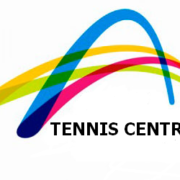The abiding memory of Viktor Troicki is delivering for Serbia. Whether it was being held aloft on the shoulders of his compatriots, who rushed onto court at the Belgrade Arena in celebration of clinching the 2010 Davis Cup crown or, 10 years later, when he partnered Novak Djokovic in the deciding doubles match against Spain to capture the inaugural ATP Cup title.
The 35-year-old, who officially announces his retirement from professional tennis, transformed into a world-beater in international team competitions, moving out of the shadows of his childhood friends Djokovic and Janko Tipsarevic, during a golden age for Serbian tennis.
“It’s been a wonderful ride,” Troicki told ATPTour.com this week. “I am happy with what I achieved and I lived my dream with friends since childhood. I achieved things I never thought I could, but I want to enjoy some time at home now with my family.”
Troicki came mightily close to a place in the Top 10 of the FedEx ATP Rankings during the European clay swing in 2011 and won three ATP Tour singles titles, plus two doubles trophies. But nothing compared to his emotions after he struck a crosscourt backhand return winner to beat France’s Michael Llodra 6-2, 6-2, 6-3 in the deciding rubber of the 2010 Davis Cup final. Watched by 17,000 fans in Belgrade, it gave him “the greatest experience of my life”.
World No. 1 Djokovic paid tribute to Troicki, telling ATPTour.com this week, “Congratulations on your career. It’s a sad day for all of us who know you. We’ve been friends for a very long time, since [we were] eight years old [and] played so many matches against each other in Serbia. We travelled so much, played doubles [together], won [the] ATP Cup and Davis Cup and had some unforgettable memories on the Tour and the court.
“It’s been an incredible journey to witness your career as your friend, colleague and compatriot. Your commitment for the Serbian tennis team has been incredible, unprecedented and you’ve been a great inspiration for many generations of young tennis players in Serbia… You should be proud of everything you’ve achieved.”
Troicki, who dreamed of playing important matches as a child, worked for everything he achieved. When he partnered Djokovic to a deciding doubles match victory over Spain’s Pablo Carreno Busta and Feliciano Lopez in the 2020 ATP Cup final, Troicki became the first player to win each of the three men’s team competition titles (also two World Team Cup titles in 2009 and 2012 at the Rochusclub in Dusseldorf).
“I won two World Team Cups in Dusseldorf, the Davis Cup and the ATP Cup, so I’m really proud,” said Troicki. “Winning the Davis Cup in 2010, in front of a home crowd, in the deciding rubber was crazy. I will take it with me forever.”
In tribute to his good friend, Tipsarevic told ATPTour.com this week, “Congratulations on an unbelievable career. It was an honour for me to share all of the downs and the ups, especially the ups of your career. You’ve reached the top of our sport and I’m sure that in the continuation of your life, with the same attitude and the same spirit that you had on a tennis court, you will reach new heights.”
Former doubles World No. 1 Nenad Zimonjic told ATPTour.com, “He had a great career, reaching No. 12, being a part of the Davis Cup team and winning the deciding rubber against France for the title. He should be proud of his career and I wish him all the best in the future. We have a lot of great memories. He is 10 years younger than I am, and I try to help all of our players. Viktor was no exception. We also had the chance to win the Sofia title together in 2017.”Troicki’s parents scraped together money to give their son the best possible chance of tennis success during a period of economic uncertainty in Serbia. He came across Djokovic and Tipsarevic at junior tournaments in Serbia, before moving to train in Boca Raton, Florida, for two years as a teenager.
“I’ve known Novak since he was eight, meeting him in one of his first tournaments,” said Troicki. “We played each other in the second round, and I beat him nine games to love. Janko was two years older than me, and he accepted me like a brother. He always helped me to feel welcome, support me and gave me great advice.
“I was maybe not as gifted as some other players at my age, so I had to prove myself and to work even harder to make it and become a top player. I never gave up. It was great to travel, compete together and have such good friends.”
Out of the juniors that included a 2004 Wimbledon doubles final appearance with Robin Haase, Troicki came under the guidance of Jan de Witt. Troicki learned about self-discipline and how to work in a professional way from the German’s training base in Halle and formed a long-term partnership with fitness trainer Milos Jelisavcic.
“He had the ability to work day in and day out,” De Witt, Troicki’s coach from 2006 to 2012, told ATPTour.com. “He worked hard every day. He brought the physical strength and he had a good first serve. We made progress every year, No. 450 to 220, then at the end of the second year at No. 120, then 60, 30, 20 and close to the Top 10 in his best year. Initially, we worked a lot on his second serve, to win more points, and to win points on second serve return.
“He enjoyed the team environment in Halle, working with players like Marco Chiudinelli, Jarkko Nieminen and Ivan Dodig. He liked having people around him, taking the positives from it. All the Serbians are good team players. They are really proud to play for their country.
“When we started working to help him win the Davis Cup with his friends, and to be able to reach that dream in the deciding rubber, it was amazing. I learned from Viktor that as long as you work hard, there are no limitations. He did more in his career than I ever thought possible.”
www.atptour.com/en/news/troicki-retirement-tribute-june-2021






